With the mini heat wave we experienced in early April, I rushed an email out to all current Hoverfly Lagoons volunteers to get some Lagoons out in gardens ASAP (see: The Buzz Club Hoverfly Lagoons Project webpage). The garden down here in East Sussex was teeming with hoverflies, particularly Eristalis pertinax, a honeybee mimic, and as my daughter and I were creating Lagoons out of Alexanders and grass cuttings, Eristalis hoverflies were landing and offloading eggs right in front of our eyes!
I’m hoping the project will inspire people to re-focus on the wildlife in whatever outdoor space they have available to them, and helped a little by my 5-year old, explore the lives of insects. Lagoons provide a window into a lesser-known world, and they don’t only benefit hoverflies.
APRIL – creating Lagoons for hoverflies
Lagoons can be made from any water-retaining container, but we ask volunteers to create them using plastic milk bottles because they work, they are a standard size, and they don’t cost a thing.
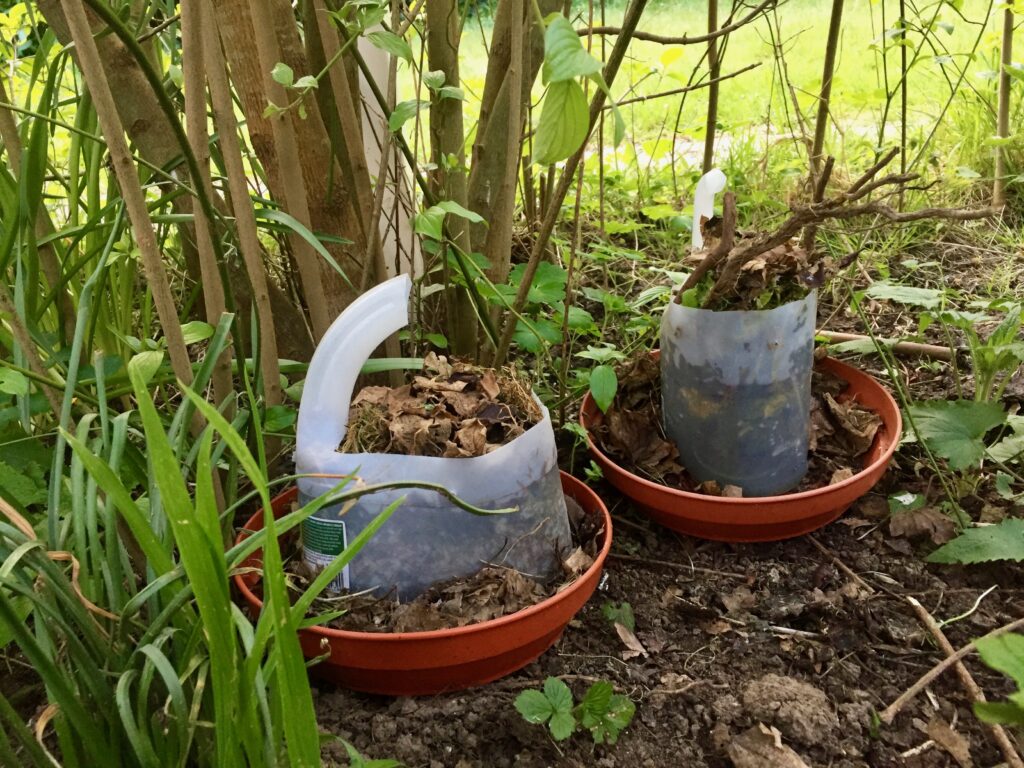
Creating Hoverfly Lagoons on 4th April with my 5 year old daughter (and her buddies):
MAY – first search for hoverflies in Lagoons
It has been quite extraordinary the number of hoverfly eggs that have turned up in our Lagoons so far this year. It indicates to me that this kind of habitat may be particularly limited at the moment. With a view to understanding more, new to this year we are asking volunteers to complete insect surveys in their gardens, which I hope may give us an insight into what’s happening in gardens over the Lagoon season.

This is the first year I have seen so many huge batches of eggs!
The second film I threw together is designed to give volunteers an idea of what they might find in Lagoons right now; eggs and tiny 1st-stage hoverfly larvae. At this early stage searches need to be made carefully, and if tiny larvae are found, I recommend leaving the Lagoon for a couple of weeks to allow them to grow (and/or eggs to hatch) before attempting to do a May survey.
It’s amazing what can be achieved from the comfort of ones hammock. What to look for in Lagoons in April and May:
It’s been 3 weeks since the huge batch of eggs was discovered (in the above image), so today (10th May) I searched through this particular Lagoon.

The larvae were in their 1st and 2nd stage of growth (at the end of the 3rd stage of growth, they crawl out the Lagoon and pupate in the dry leaf litter / soil). Mia joined me to search through the content, and look at it under the microscope.
Mia taking a closer look at a hoverfly larva with me, taking her dual role as student and teacher very seriously:
I created a Lagoon inside a large glass vase to enable me to view and record the decay over time, and peek inside. I thought it would be cool to see and record how deep the larvae forage.
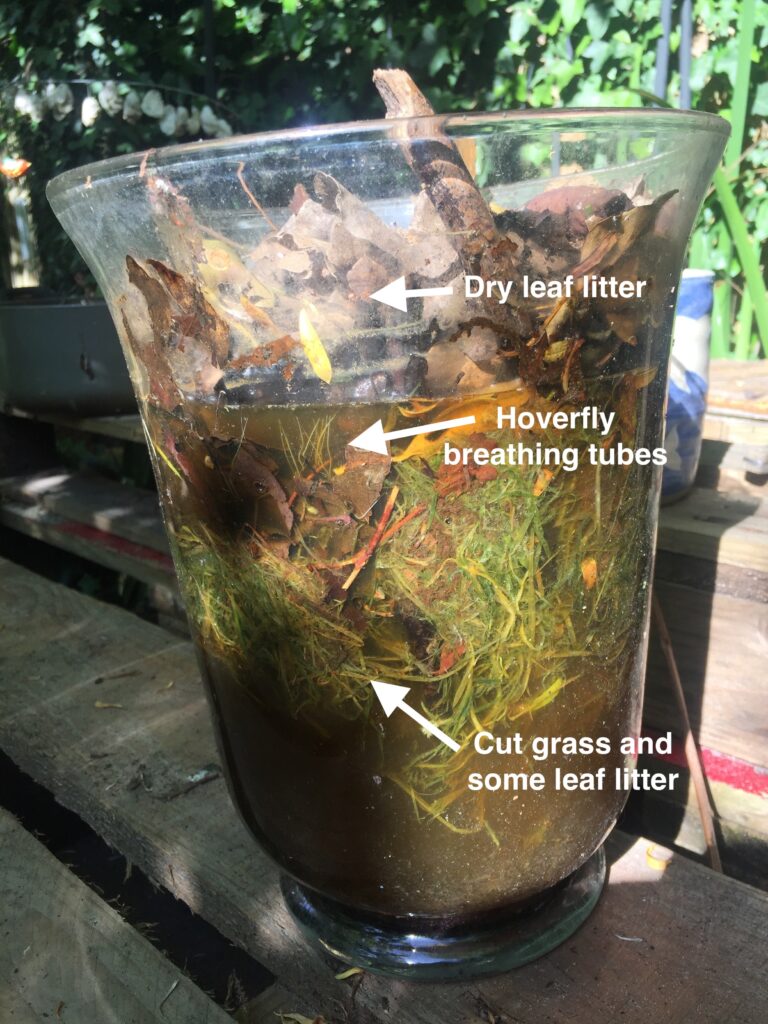
JUNE – sometimes inspiring participation can be tricky
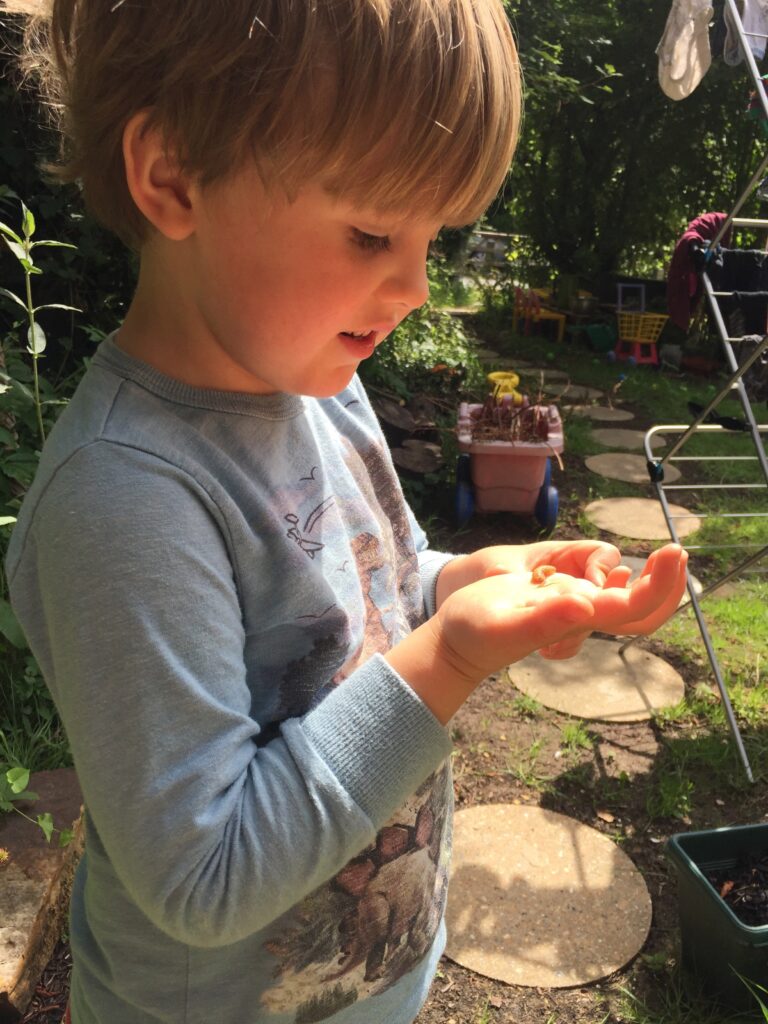
Late June Survey with an easily distracted 4 year old:
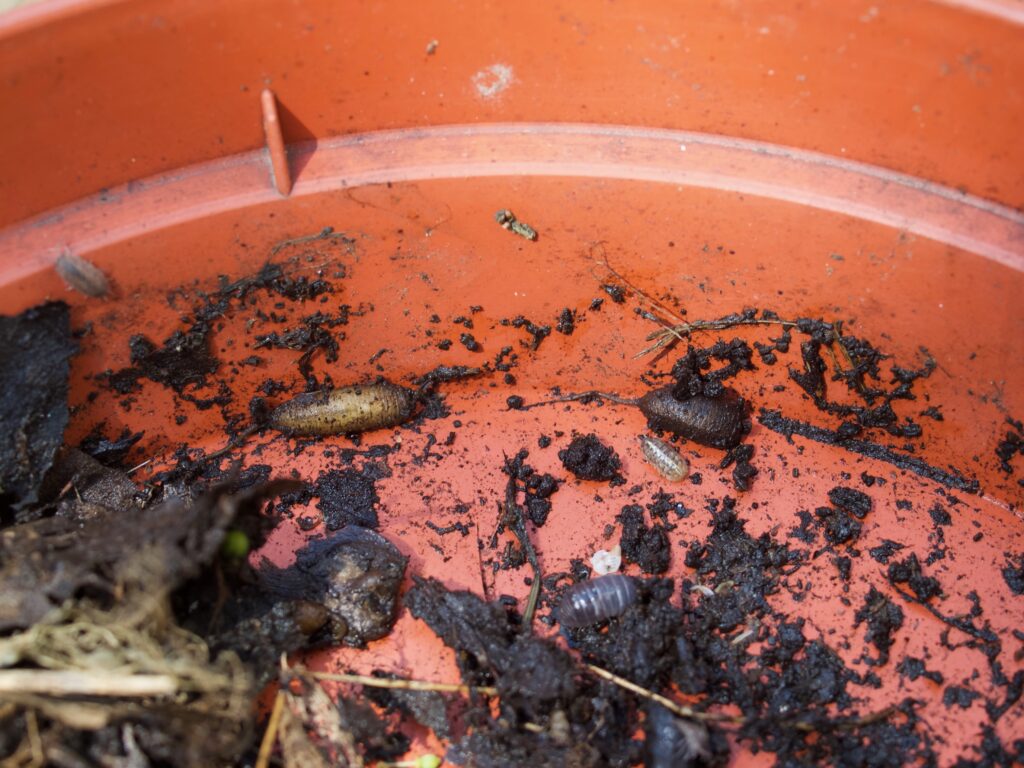
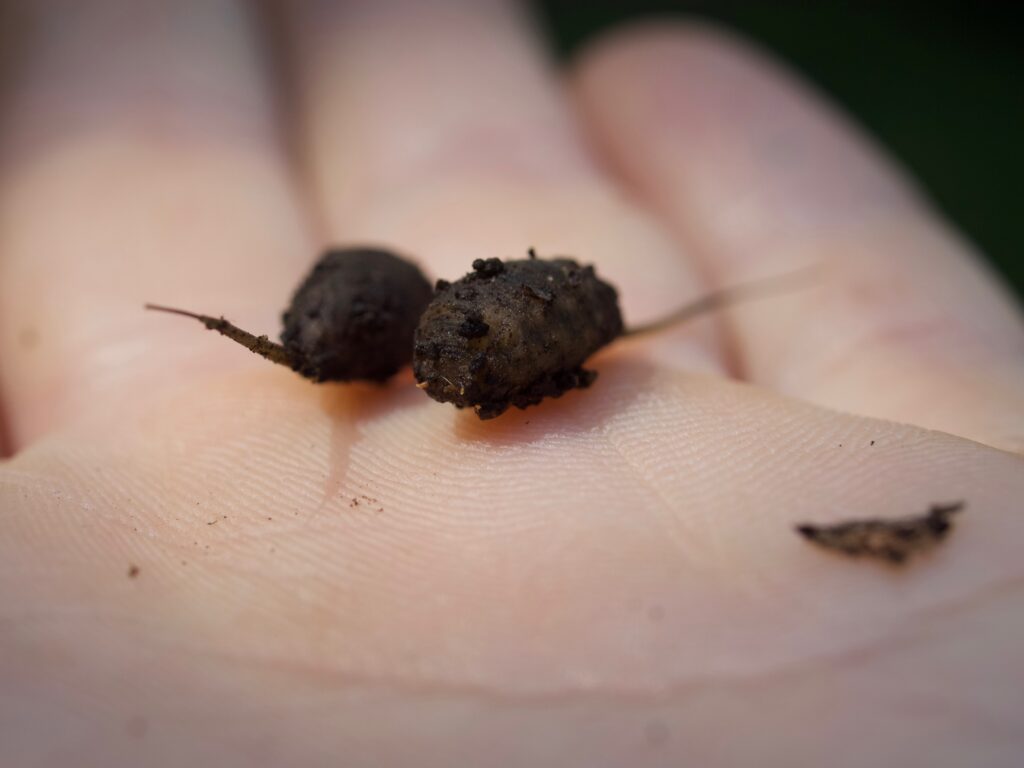
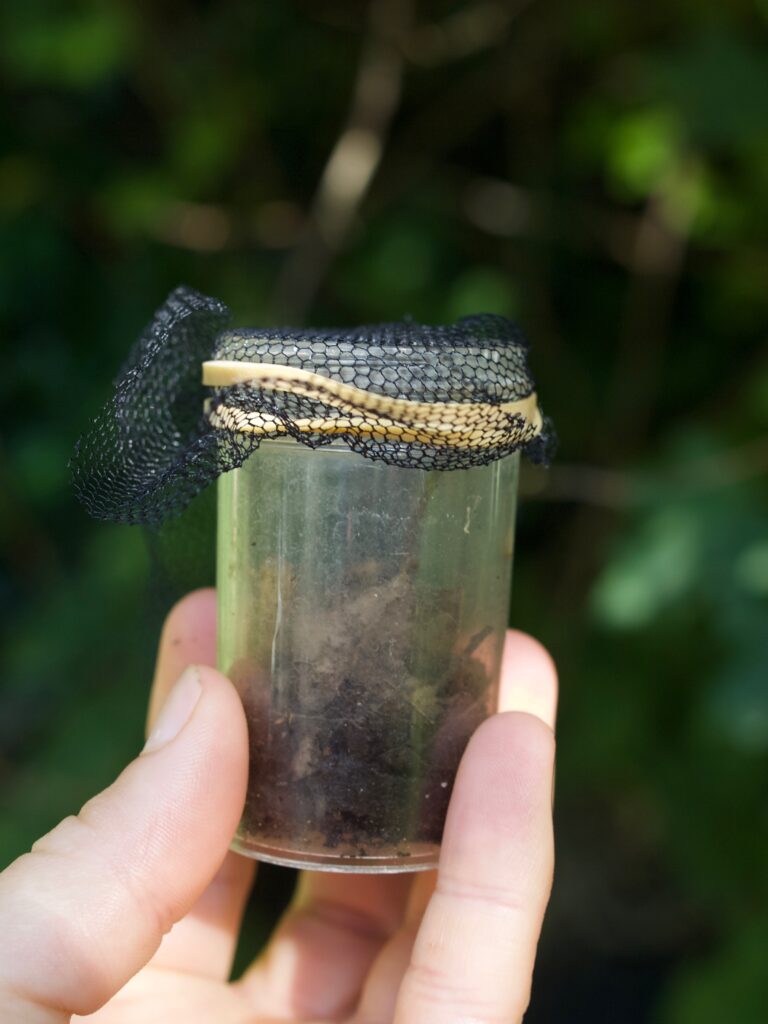
Excitingly, through our searches we found some ‘different looking’ pupae in our pupation trays, which we dutifully collected. They consequently emerged and turned out to be Rhingia rostrata a new species of hoverfly to add to the Lagoons list! At the larval stage, this species does not have a long breathing tube, and we know very little about its biology. What’s more, including this species in the Lagoons lineup means a different suit of flowering plants are visited and pollinated in gardens, as this hoverfly has a very long tongue. We are learning something new every year with the Hoverfly Lagoons project, and continue to demonstrate the potential of having this habitat in gardens!
July – adults have been emerging for the last few weeks, as much as I tried to get the littles involved in the first release, our priorities did not meet so alas here is the release of the first adults sin children:
August – things are cooling down now and larvae in Lagoons are already starting to ‘fatten up’ in preparation for winter. As it becomes cooler and days become shorter, regardless of body-size or stage, larvae start to become opaque with white fat (at any other time, only final/3rd-stage larvae do this as they prepare to pupate). Many larvae in Lagoons now will likely remain there over winter, waiting for spring 2021.
2-minute video illustrating the larvae in a couple of my Lagoons (plus a brief cameo from the children):
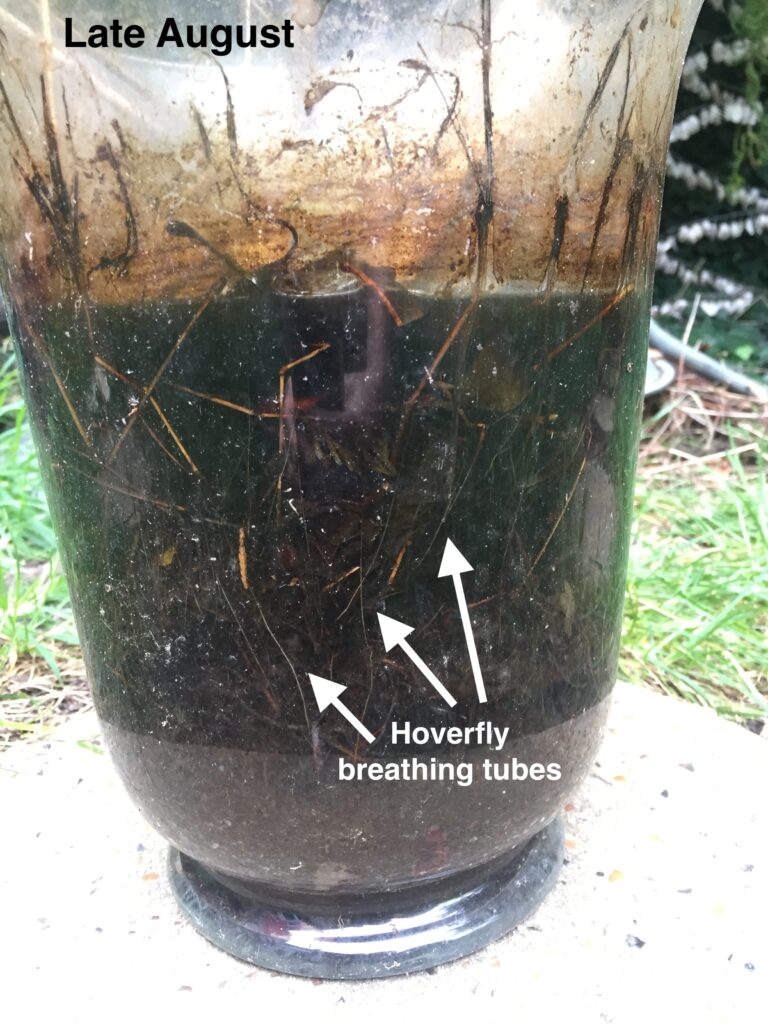

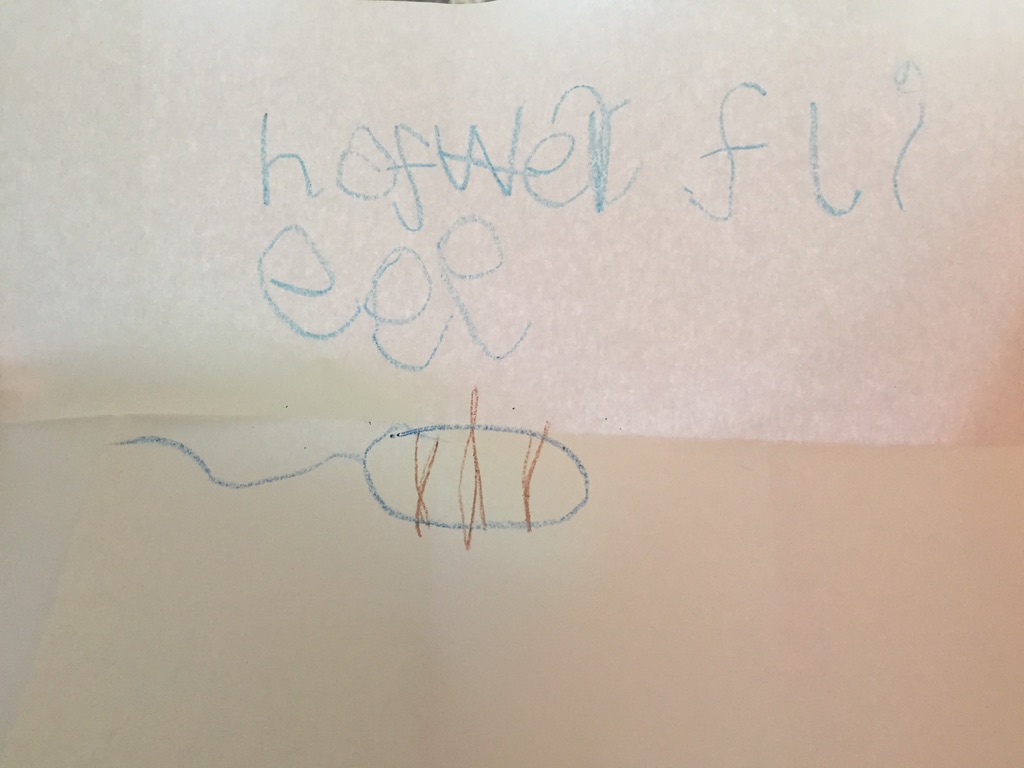
September – we’ve had a late summer, a peak in temperature in the UK this month, and it’s meant that there has been a hoverfly boom in Lagoons! It’s nearly October and I’ve counted several tiny larvae in our garden Lagoons, I wonder if they will survive.
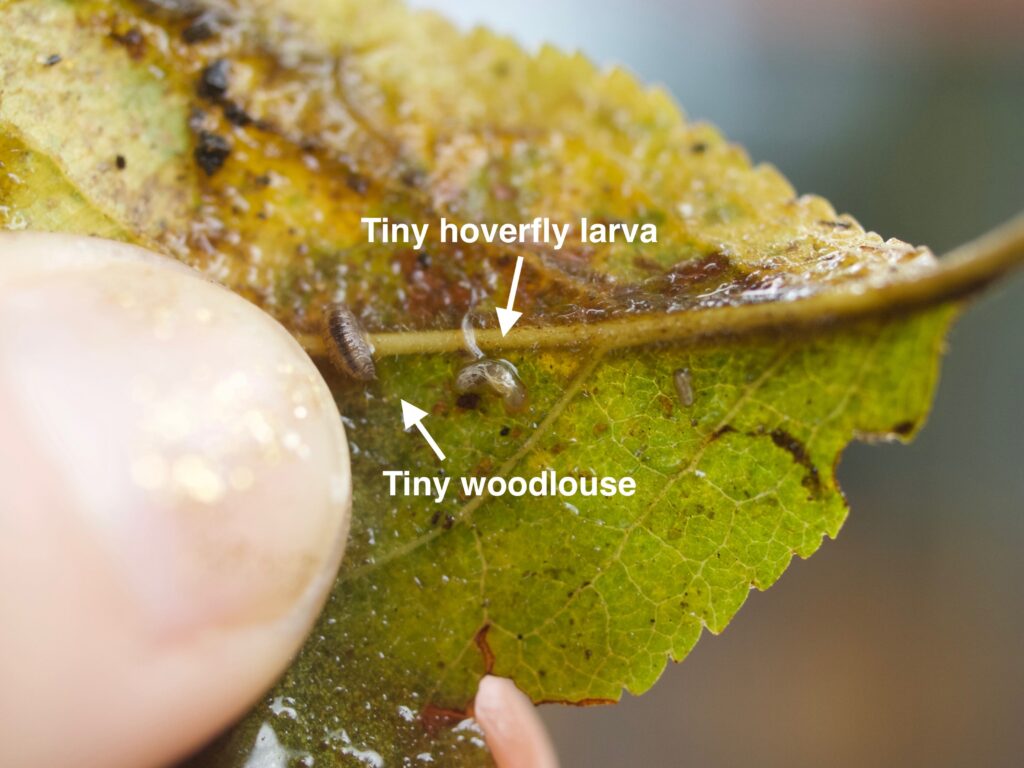
We also have several medium to large larvae, likely reaching 3rd stage (or final stage). All these larvae are very likely to overwinter now, they will stop growing larger and start fattening up for winter, becoming visually opaque.
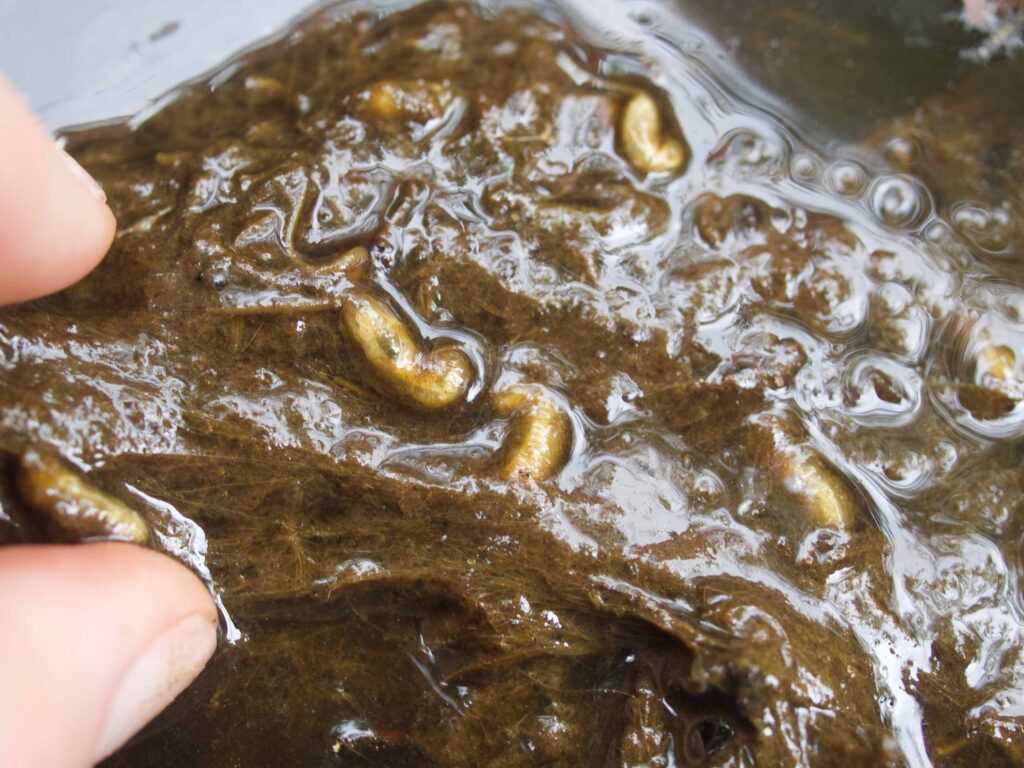
During winter they don’t tend to feed, though most remain in the water. It will be interesting to see how they are in a month!

Thank you for the lovely video’s.
I have just looked through my two lagoons in my back garden, which I made on 10 Apr 20 and could find very little unlike Mia. Interestingly although in a shaded and somewhat overgrown area of the garden, much of the leaf litter I put on top of the lagoon and in the lower trays was missing. We do have a lot of birds coming into the garden to feed. I wonder if some of this has been removed for nesting material or do they feed on the Hoverfly larvae?
Hi Stephen – I’m so pleased you enjoyed them. Yes this is possible, birds will remove leaf litter for nesting material (just FYI see FAQs on the project page https://www.thebuzzclub.uk/hoverfly-lagoons) and they will eat the larvae later on, so it can become a problem in some gardens. Volunteers have reported using small logs or sticks placed over the top of Lagoons to prevent this from happening, even a cage in one particularly problematic case! But you may find if you replace the content, the birds have moved on in their cycle so won’t repeat this behaviour.
I’ve got four lagoons and three of them were full with larvae – 51 in one of them! In the one with no hoverfly larvae, I did find another larva which I dutifully returned. On reading your blog to my horror I realised it was probably a muscid larva; looked just like your pic! Perhaps that accounts for the lack of rat-tailed maggots.
Any top tips for getting rid of the smell on your hands? Despite MUCH scrubbing and hand cream, I could still detect the grassy stink the next day. Ha, ha – it kept the family at arms’ length!
Ah yes, the muscid larvae may be predators and so eat hoverfly larvae (and mosquito larvae), often all of them if they come across them (for those reading this and interested see: http://www.hoverflylagoons.co.uk/the-lagoon-community/). The smell, yes, I’ve described it as the bog of eternal stench, as it can linger. I’m afraid if it does bother you, the best solution is wearing reusable household gloves.
A good solution to ensuring social distancing 🙂
Inspired by your ideas I have two lazy hoverfly lagoons, eg black buckets with garden gunge in which I make sure are topped up with water. I have recently really noticed lots of hoverflies on the umbellifers I grow in my garden so am very chuffed. I will try to be more scientific next time and will join your efforts and do the monitering. Great to see the hoverfly photographs by the wonderful Steven Falk.
Awesome!
Hi
I have just witnessed 2 parasitoid ichneumon (possibly confusor) wasps emerging from hoverfly cocoons. Should I be concerned? I have photographed then released them as nature has a way of balancing itself. I hope this was the correct thing to do.
I have one very successful, densely packed grass lagoon in the rear of a flowerbed, shaded for the first half of the day and one not so successful lagoon filled with leaves at the foot of the trunk of a weeping pear tree (in shade all day). Not sure how much the position has affected the success rate or if the type of leaves may be an issue – There are some eucalyptus leaves that made there way into the lagoon. I know a lot of different species steer clear of eucalyptus’ pungent, antiseptic properties.
No concern necessary, this is normal as they are part of the community. We’ve been experimenting with different contents in the ‘pupation trays’ to limit parasitoids, because they will just parasitise everything they find and the trays may end up acting a little like a serving platter. We’re experimenting with different content and depth. Watch this space…